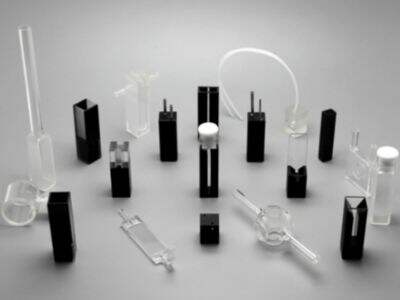What are Quartz Cuvettes?
Don't you know anything about Quartz Cuvettes? They are simply tiny containers prepared from this extremely hard, highly resistant glass called quartz. These cuvettes that scientists use as part of science known as the spectroscopy science. Spectroscopy is a method of viewing light and a few materials or mediums that admit light. Based on how that light interacts with the substance when coming out from the quartz cuvette, even the properties of the material involved might be determined
Cuvettes: Fused Quartz vs. Quartz Glass
There are two types of quartz used in making Optical Cuvettes, which are quartz glass and fused quartz. By observing the differences between these two types, scientists can determine which one is the most suitable with respect to their experiment.
Fused Quartz: Fused quartz is prepared by melting natural quartz crystals at extremely high temperature. This produces a very solid and transparent glass that can be used in various tests at elevated temperatures. Due to its stability, fused quartz cuvettes are one of the most used in laboratories however, they would not come cheap for long and delicate experiments.
On the other hand, quartz glass is manufactured by melting the quartz powder and pressing it into a mold. These cuvettes are weaker and not pure as much as their counterparts fused quartz is but are cheaper as well. That makes them perfect for the experiments that can be cost sensitive.
There are two types of quartz cuvettes: the ones made of synthetic quartz and those made from Fused Silica. Fused quartz cuvettes are generally more expensive; however, they are also more durable and far less likely to become scratched. It can withstand higher temperatures more effectively, which are suitable for high-temperature experiments. Optical glass cuvettes do cost more, however, quartz glass cuvettes are less durable and can scratch easily. They also do not perform well under high temperatures, so avoid using them in heat-involving experiments.
Conclusion
Overall, the Quartz Cuvettes serve as the gateway in the domain of spectroscopy. Scientists are able to make experiments over the properties of light and the materials involved by utilizing quartz vapor cells. For choosing a quartz cuvette, one has to consider the material one has been working with the type of cuvette required and proper maintenance needed to achieve the best outcomes. This knowledge leads you to efficiently conduct effective and informative experiments.
 EN
EN
 AR
AR
 BG
BG
 HR
HR
 CS
CS
 DA
DA
 NL
NL
 FI
FI
 FR
FR
 DE
DE
 EL
EL
 HI
HI
 IT
IT
 JA
JA
 KO
KO
 NO
NO
 PL
PL
 PT
PT
 RO
RO
 RU
RU
 ES
ES
 SV
SV
 TL
TL
 ID
ID
 LV
LV
 SR
SR
 SK
SK
 UK
UK
 VI
VI
 HU
HU
 MT
MT
 TH
TH
 TR
TR
 FA
FA
 AF
AF
 MS
MS
 GA
GA
 IS
IS
 LA
LA
 KK
KK







